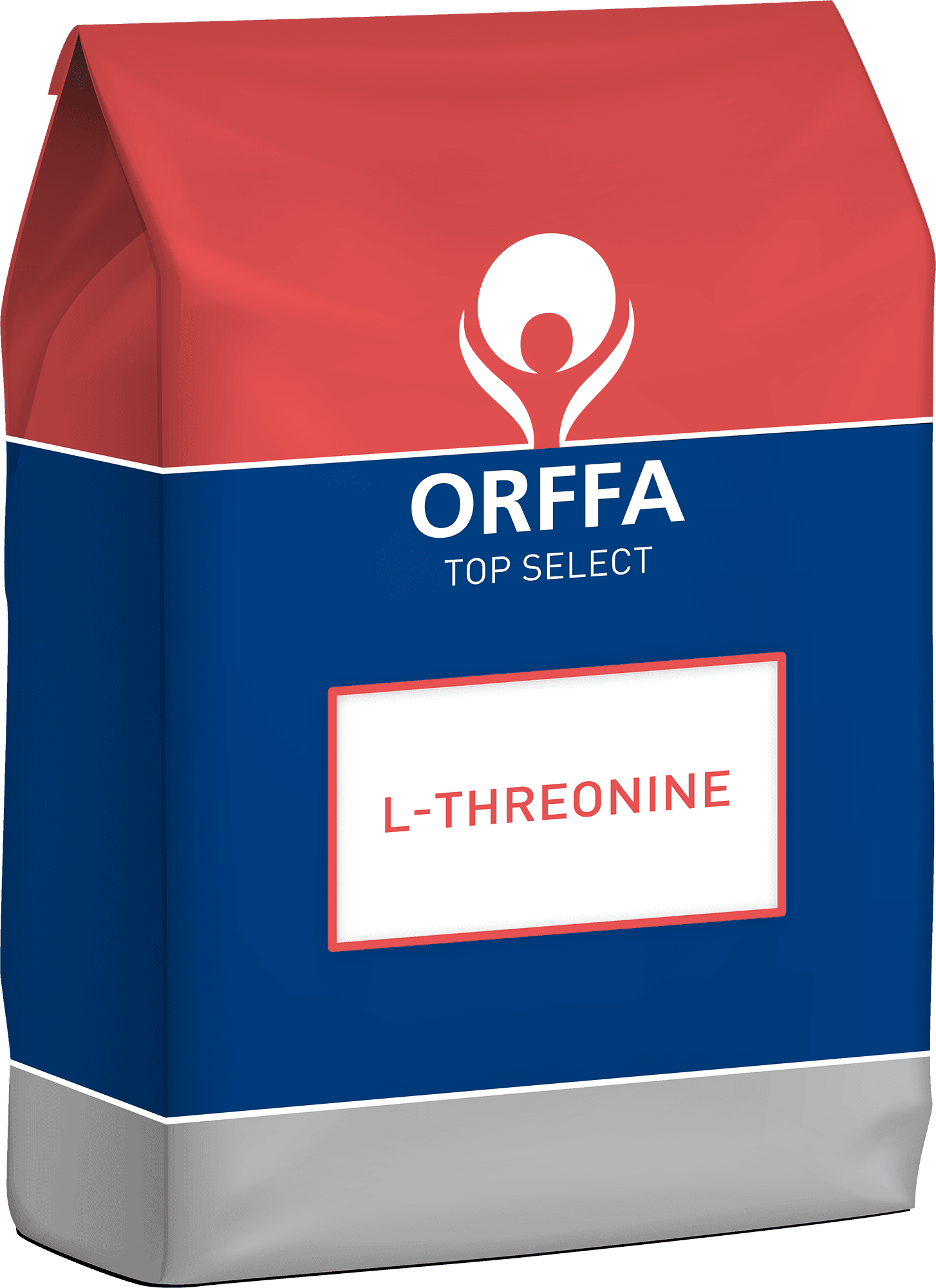Amino acids are the building blocks for protein. Growing animals (like pigs and poultry) need amino acids to build muscular tissue (body protein). In total 20 amino acids form the building blocks for protein. Nine of these amino acids cannot be synthesized by the animal and have to be supplied via the feed (these are called essential amino acids). The other amino acids can be made by the animal from dietary protein. Besides building blocks for protein, amino acids are also needed for several body functions, like development of organs and optimal functioning of the immune system.
The concept of ideal protein
Amino acids which are essential cannot be synthesized by the animal and therefore must be provided by the diet. When the supply of one of these essential amino acids does not meet the animal’s requirement for this amino acid, it is said to be limiting. This limiting amino acid is limiting the potential growth of the animal. Once the limiting amino acid is covered via the feed, the next amino acid will become limiting (second limiting amino acid, third limiting amino acid, etc). Therefore the goal is to know the exact requirement of the animal for every essential amino acid in order to supply this amount to the animal via the diet. This is what is called the ideal protein concept. In practical diets, lysine is the first limiting amino acid. Therefore we always express the requirement of all essential amino acids as a ratio to lysine.
Amino acids can be supplied by the diet via feedstuffs (cereals, soybean meal, etc). The amino acid pattern (ratio of essential amino acids to lysine) in protein feedstuffs is not exactly in line with the requirement of the animal (the ideal protein). Protein feedstuffs are too low in the first limiting amino acids. If we would supply all essential amino acids via raw materials we would have to supply very high levels of crude protein. Because not all protein will be used, the surplus will be excreted by the animal. This surplus of protein has a negative impact on the animal’s health (surplus protein will be used by pathogenic bacteria in the large intestine and can cause intestinal disorders) and has a negative impact on the environment (nitrogen excretion).
Low crude protein, optimal supply of amino acids
Optimal nutrition means a balanced supply of amino acids to cover all the needs of the animal. On the same time we want to formulate diets with a crude protein level as low as possible, in order to ensure optimal health for the animal and spare the environment. This is possible with feed-use amino acids. These free amino acids enable the formulator of the diet to supply the exact amount of every single amino acid, in order to cover the need of the animal in every life stage. The crude protein can be kept on a very low level, which is ideal for animal health and beneficial for the environment.
Knowing the requirement of the animal
Extensive research is performed to determine the exact requirement of every essential amino acid for the animal. The requirement is depending on the animal species (pigs, poultry) and on the life stage. The need for amino acids for piglets is for example different from the one of the growing pig or the lactating sow. Also other factors, like the health status, may affect the requirement.
Feed use amino acids
- L-lysine – the leading amino acid
- L-threonine – nutritional balance in practice
- L-tryptophan – a key nutrient for growth and feed intake
- L-valine – release the potential of your feed



